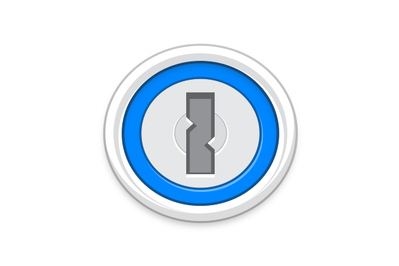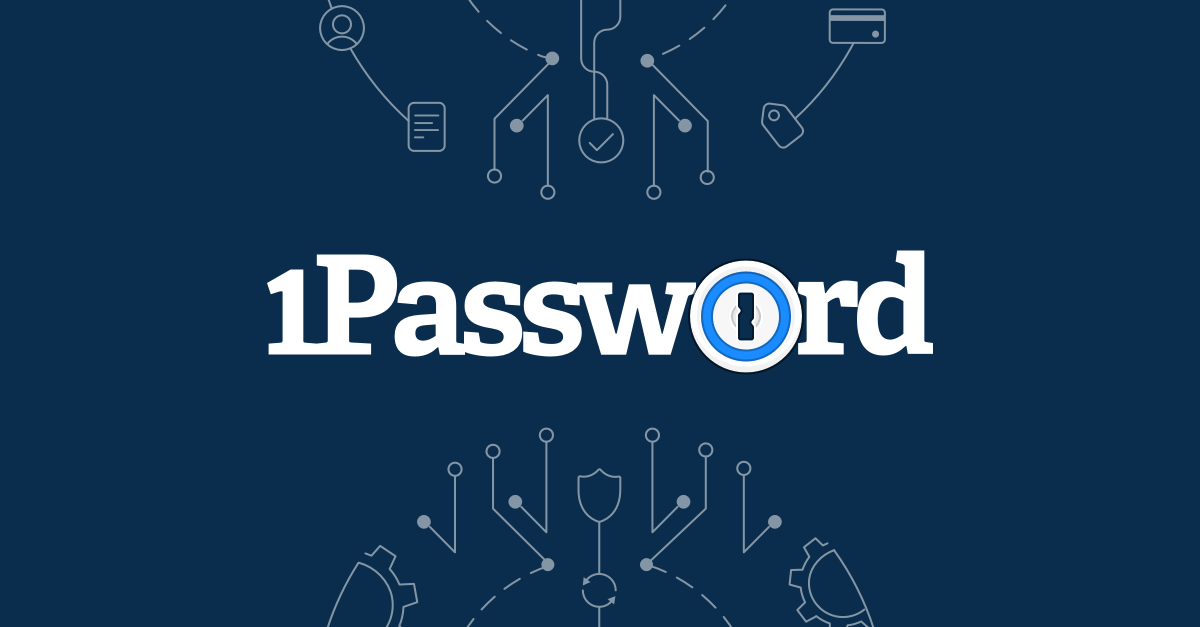Stop forgetting passwords now. With our free password manager, you can log in securely, autofill forms in a second, and use your passwords wherever you go. Password managers are programs that keep all your log-in details in an online safe-deposit box. They’re critical tools for staying safe, because the No. 1 most annoying thing about the Internet. I'm using 1password and I've seen 1password allows you to store 2FA tokens in the same place where you store the password. I don't like the idea of having everything in the same place as if someone steal my 1password password it could access to my account and get both password and security tokens.
Protected by the 1Password security model, no matter what
1Password automatically secures your data regardless of how you sync it across devices. These are some of the steps 1Password takes to keep your private information safe, whether it’s stored on just one device or synced to many:
Encrypting your data with 256-bit AES. Your 1Password data is kept safe by the industry-standard 256-bit AES encryption algorithm. This makes it all but impossible for someone to decrypt the data you entrust to 1Password.
Defending against crackers with PBKDF2. 1Password uses PBKDF2 to make it harder to use a cracking tool, which is designed to learn passwords by making a bunch of guesses in rapid succession, to defeat your Master Password’s security.
Keeping your Master Password separate. Your Master Password isn’t stored alongside your 1Password data, or anywhere at all. This is a bit like making sure the key to a safe isn’t kept right next to it: Keeping them separate makes everything more secure.
Making your data available even when you’re offline. 1Password stores your data on your devices, so your logins, notes, and other information can be accessed even if you aren’t connected to the Internet. This means you aren’t dependent on access to your sync provider; your data will always be available when you need it.
How Secure Is 1password
Syncing your data makes it more secure
Sync is the safest way to make sure that your data is available when you need it. It’s more secure to have 1Password on multiple devices and to keep those devices in sync than it is to share information using texts, emails, or unencrypted files. Sync also makes it easier to recover your data if something happens to a device.
No matter how you sync, 1Password takes precautions to protect your data:
Encrypting your data at rest. Your 1Password data is always stored encrypted, so no matter how you choose to sync, your data can’t be read by anyone on the other end.
Encrypting your data during transit. Your 1Password data stays encrypted while it’s being uploaded or downloaded, so it’s always protected while it travels between devices.
Decrypting your data on your device. Your 1Password data is only ever decrypted on your device, which means you are the only one who can see it.
1Password doesn’t restrict you to just one sync method. You can always choose how you want to sync your data, and if you change your mind after you’ve set up a sync service, you have the flexibility to move everything to a different tool.
1Password account: no-fuss security and convenience
If you have a 1Password account, you benefit from features that provide safety, privacy, and convenience:
Secret Key. 1Password creates a private, 128-bit Secret Key to encrypt your data. This key never leaves your devices, and it gives your account another line of defense together with your Master Password.
Account recovery. Most websites have a password reset feature which relies on a master key in the possession of the service provider. Your 1Password account has no such key, so it can only be recovered by people you entrust. They alone can help you regain access if you forget your Master Password or lose your Secret Key.
Secure Remote Password (SRP). Most websites send your password to a server when you try to sign in, leaving it vulnerable to interception. Your 1Password account uses the SRP protocol to authenticate your login details without sending your Master Password over the Internet, so it can’t be stolen while it’s in transit. Learn more about Secure Remote Password.
Web access to your 1Password data. 1Password.com uses the latest browser-based cryptography to provide a secure way to access your data from any modern web browser.
Everything is handled for you. You don’t have to make any decisions about how your data is synced or secured. Your 1Password account was designed to offer the most protections with the least complexity of any sync option.

iCloud and Dropbox: Secure and customizable services you can trust
If you decide not to create a 1Password account, you can sync your data using iCloud or Dropbox. The encryption algorithms, secure transmissions, and other protections in 1Password keep your data safe no matter how you sync it.
Trusted services. 1Password only uses trusted services to sync data between devices. Dropbox and iCloud are large, well-known, and carefully scrutinized by the many people that rely on them to keep their data safe.
Open standards. 1Password syncs with iCloud using AgileCloudSDK, an open source API from the creators of 1Password, and uses the public Dropbox API to sync with Dropbox. By following standards and using open source tools, 1Password lets anyone find out exactly what’s happening when their data is being synced.
Additional security features. Both services offer features like two-factor authentication and easy access from any device, which means your data is protected by every tool you’ve decided to sync it with.
WLAN server: For when a sync service isn’t an option
If you can’t sync with a hosted service, whether it’s because of corporate policies or limited Internet availability, you can use the WLAN server over a local wireless network to sync 1Password.
Secret codes for adding devices. 1Password generates a secret code when you set up the WLAN server, so only devices in your possession can attempt to connect.
Local network availability. Your data never leaves your local wireless network.
Choosing the sync method that’s right for you
You’ve seen how 1Password protects your data regardless of how you choose to sync it across multiple devices. Now that you know your information is safe no matter what, this chart can help you decide which sync option is right for you.
| Feature / Service | 1Password account | iCloud or Dropbox | WLAN server |
|---|---|---|---|
| Encrypted in transit | ✅ | ✅ | ✅ |
| Encrypted on device | ✅ | ✅ | ✅ |
| Available offline | ✅ | ✅ | ✅ |
| Available on multiple devices | ✅ | ✅ | ✅ |
| Multi-factor authentication available | ✅ | ✅* | ❌ |
| Available on the web | ✅ | ❌ | ❌ |
| Account Recovery | ✅ | ❌ | ❌ |
| Secure Remote Password | ✅ | ❌ | ❌ |
| Secret Key | ✅ | ❌ | ❌ |
| Local network | ❌ | ❌ | ✅ |
* Multi-factor authentication for iCloud and Dropbox is not provided by 1Password. Learn how to turn on multi-factor authentication for iCloud and Dropbox .
Learn more
Creating and Opening a Safe
Password Safe allows users to store all passwords in a single'safe' (password database), or to create multiple databases fordifferent purposes (e.g., one for work, one for personal use). Eachdatabase is independent can be moved and used on different systems, aslong as the same version of Password Safe is installed. Databases are encrypted with anencryption key derived from the master password (the master password,however, is not kept in the database in any form).
If you are using Password Safe for the first time, press the New Databasebutton. You will be asked to choose the name and location of yourpassword database (the default, 'pwsafe.psafe3', is fine). Afterwards,you will be prompted to enter a master password that is used to encryptand lock the contents of your new safe.
1password Cloud Safe
Create a New Database

There are two ways that a new database can be created. By clicking New Database from the Safe Combination Entry dialog when the program is started, or from the File > New Database menu once Password Safe has been opened. Using either method causes the Safe Combination Set Up dialog to appear.
1password Safe
Note: By default, Password Safe will show the databaselast used, and displays a combination prompt for it. If you use severaldatabases, you can choose between them using the drop-down list.Alternately, you can type in the path to the database to open, orselect it from a File dialog box by pressing on the ellipsis ('...')button. Once a database is open, you can change to another via the Open Database command from the File Menu.
Using Stored Passwords

Password Safe provides several mechanisms for using storednames and passwords. Most require copying the user name or password tothe clipboard and then pasting the information into the required inputfield. Password Safe provides a function, Auto Type, that automates theentering of user name and password into a web form.
1password Review 2020
- Open Password Safe
- Select the user name/password entry you wish to use
- User Name:
- o Select the user name icon from the tool bar
- or
- o Right-click and select Copy username to clipboard
- or
- o Use Ctrl + U
- and then Paste the user name into the desired field.
- Password:
- o Select the password icon from the tool bar
- or
- o Right-click and select Copy password to clipboard
- or
- o Use Ctrl + C
- and then Paste the password into the desired field.
Note: User names and passwords can also be copied to clipboard through the choices located in the Edit menu, but let's be honest, that's far too much clicking.
